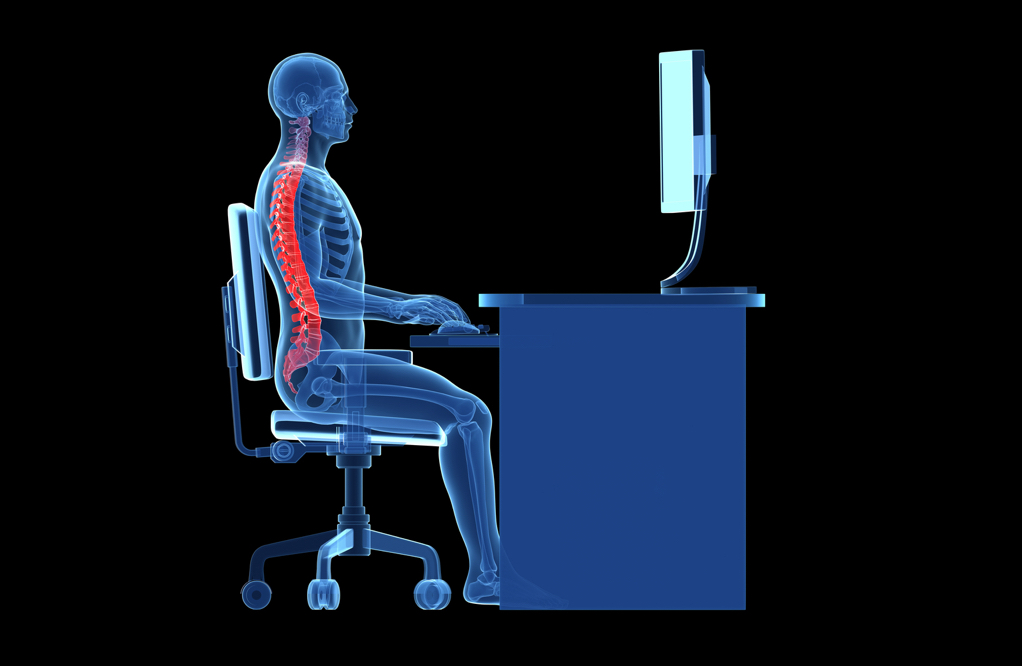Posture Pointers: 7 Tips for Breaking Bad Habits

The days of young women being advised to walk with a book balanced on their heads to develop proper posture are thankfully behind us. But that doesn't mean that our modern-day tendencies of slouching in our seats, constantly looking down at our phones and hunching over laptops are not contributing to bad posture habits.
The goal of posture is to be well aligned, said Jill Henderzahs-Mason, a wellness physical therapist at the Mayo Clinic's Healthy Living Program in Rochester, Minnesota. That means having everything stacked —the head is stacked on the shoulders, which are stacked on the spine, she said.
"Think of posture as a set of blocks, which are stable and sturdy when one block is stacked neatly on top of another," Henderzahs-Mason said. A block that's out of position weakens the rest of the structure, she said.
Bad posture habits may end up causing health problems, and people may wind up at their health care provider's office for these aches and pains, said Eric Robertson, director of graduate physical therapy education at Kaiser Permanente of Northern California and a spokesman for the American Physical Therapy Association. Habitual poor posture — for example, when the head is held too far forward or shoulders are too rounded — over time, typically causes trouble, he said.
Holding the body in positions where the joints fall out of alignment results in unnecessary stress on muscles and the tissues around them, Robertson explained. Developing bad posture habits can weaken muscles and lead joints to become less flexible, he said. [Don't Sit Tight: 6 Tips for Better Posture in Your Seat]
Posture is definitely improvable at any age, although it may be more challenging to correct as a person gets older and the muscles and joints have adapted to bad habits, Henderzahs-Mason told Live Science.
Some changes in posture due to osteoporosis may be permanent, Robertson said. But no matter how old people are, they can make their muscles stronger and improve the resiliency in their joints, he said.
Sign up for the Live Science daily newsletter now
Get the world’s most fascinating discoveries delivered straight to your inbox.
Tips for breaking bad habits
Live Science asked these two experts for their advice to break bad posture habits that many of us are guilty of committing. Here's what they said.
- Change positions often, Robertson recommended. Avoid sitting for lengthy periods of time in the same position. Stand up or take a stretch break about every 20 minutes, he said.
- Whether sitting or standing, make sure your head is in line with your shoulders, and your shoulders are in line with your hips, Robertson told Live Science.
- Find ways to avoid putting your body in awkward positions, Henderzahs-Mason said. To avoid cradling a phone on one shoulder, use a speaker phone or a headset instead. If your computer has the ability to adjust its screen, place it slightly below eye level so the head and shoulders aren't constantly curved forward.
- When doing desk work, the height of your chair should allow you to place both feet flat on the floor while keeping your knees level with the hips. "Dangling feet are a challenge to maintaining good posture," Henderzahs-Mason said. Let the back of the chair support the curve of your lower back, or use a lumbar pillow or rolled towel for additional support. [5 Surprising Facts About Pain]
- A backpack, which distributes weight evenly, may be a better alternative then a book bag that hangs to one side of your body. For people who do carry a book bag or a handbag, Henderzahs-Mason recommended alternating the side of the body that you carry it on, from one day to the next, to prevent muscle imbalances.
- When driving, the seat should ideally be slightly reclined to take some pressure off the back. Adjust mirrors so the driver does not need to strain his or her neck while seated, Henderzahs-Mason advised. "Bucket seats are not your friend, especially on longer road trips," she said, because they keep the spine in a more flexed position, and the strain of this position can work its way up to a person's neck.
- Consider getting a formal assessment of your posture from a physical therapist, Robertson said. "Awareness of your posture is part of the solution to improving it," he said.
Follow Live Science @livescience, Facebook & Google+. Originally published on Live Science.
Cari Nierenberg has been writing about health and wellness topics for online news outlets and print publications for more than two decades. Her work has been published by Live Science, The Washington Post, WebMD, Scientific American, among others. She has a Bachelor of Science degree in nutrition from Cornell University and a Master of Science degree in Nutrition and Communication from Boston University.









